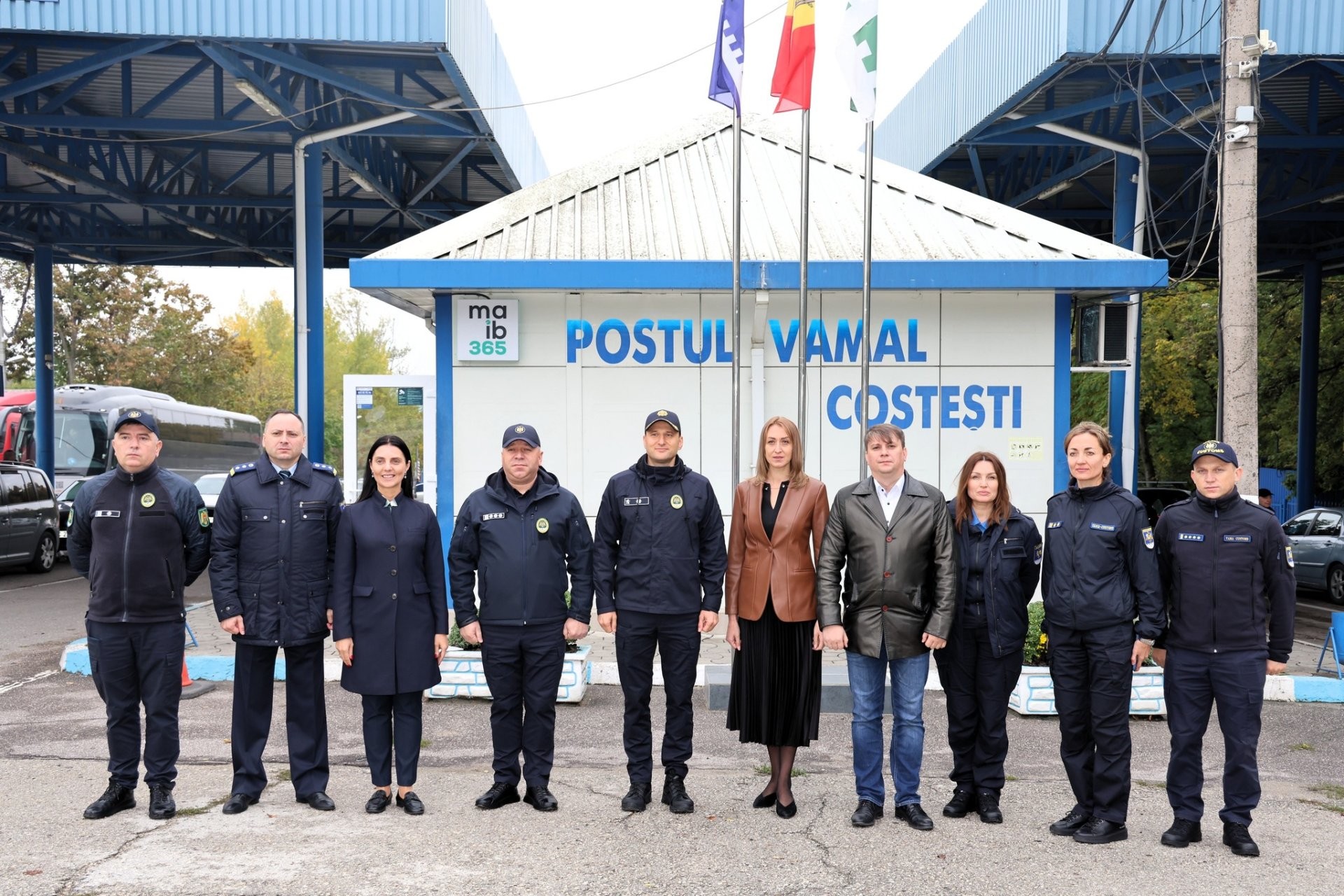
Simplified procedures at Costesti-Stanca border crossing of Moldova
Moldova is applying the European single border control model for the first time, based on interinstitutional cooperation. The Customs Service and the General Inspectorate of Border Police (IGPF) today launched the pilot project regarding the delegation of competencies at the Costesti-Stanca state border crossing point. This represents a strategic initiative for the modernization of national border management.
The implementation of the project, planned for a period of 12 months, aims to optimize crossing times, simplify procedures and enhancer operational efficiency, for the benefit of citizens, the business environment and the state.
The official launch took place at the Costesti-Stanca state border crossing point, marked by the signing of the Joint Order on the approval of the Interinstitutional Instructions, an act that establishes a clear framework of responsibilities and a transparent delineation of duties between the two authorities.
“This project is a clear example of efficient institutional cooperation and modernization through action. The delegation of competencies at the Costesti-Stanca crossing point reflects mutual trust between authorities and our ability to implement European models of border management. It is an important step in strengthening professionalism, optimizing processes and providing modern and predictable public services,” said the Director of the Customs Service Alexandru Iacub.
The event also included the handover and receipt of necessary control equipment from IGPF to the Customs Service, as well as the practical demonstration of new procedures, including the authentication of the designated user at the Customs Service in the Integrated Information System of Border Police (SIIPF) and the registration of transport means and drivers in the system.
Customs officials have been earlier trained on the application of new procedures and the exercise of competencies taken over from the Border Police, in order to ensure a uniform and efficient implementation of the process.
The results of the project will be evaluated after the first six months of application, and the accumulated experience will serve as a foundation for extending the model to other border crossing points.
Government approved extension of energy compensation for all families in Moldova
Registration process for heating compensation to start in November
Moldova's military strategy for 2025-2035 approved by Government
New military strategy to guide Moldova's defense for next decade - defense minister says
WEATHER // Yellow Code of heavy rainfall across Moldova; authorities urge caution
Authorities issue warnings for residents amidst Yellow Code for rain in Moldova
Moldova's Academy of Sciences hosts historic meeting: James Rothman, Nobel laureate with Bessarabian roots, alongside Hiroshi Amano, hold dialogue with young scientists
Transplant recipients, physicians pay tribute to organ donors at national conference in Chisinau
Moldovans' community from Norway marks Wine Day at museum in Minnesund
Implementation of the EES System at external borders of European Union; Moldovan Foreign Affairs Ministry unveils new rules of entry to EU states
Moldovan parliament speaker, in interview with AGERPRES Agency, says European integration process can help expedite resolution of Transnistrian problem
Simplified procedures at Costesti-Stanca border crossing of Moldova
Moldova's wines, gastronomy, culture celebrated at Cercle Royal Gaulois in Brussels
Kyiv–Bucharest via Ungheni: new friendship train strengthens ties between Ukraine, Moldova, Romania
Moldovan Foreign Affairs Ministry condemns Russia's massive attacks on Kyiv
PHOTO GALLERY - Varatic - a family album, new publication by Stefan Susai
PHOTO GALLERY // The Passions of Job - drama of family from Bessarabia, on stage of National Theatre in next week-end
Over 80 young people of Moldova to receive monthly allowance through National Program +3,000 Lei for Your Career
Governor of National Bank of Moldova says country integral part of financial Europe, example of innovation
Director of Moldova's Termoelectrica enterprise says there are no reasons to increase heat energy tariffs
Moldovan government warns citizens about online financial frauds
Fuel prices drop in Moldova for second consecutive week, influenced by developments on international markets
DOC // Alecu Russo State University of Balti awarded Order of the Republic
PHOTO // From school to business: how international support changes lives on both banks of Dniester
DOC // New fixed tariffs, capped prices for renewable energy; Moldova's National Energy Regulator's decision published in Official Journal of Moldova


